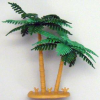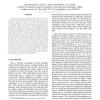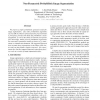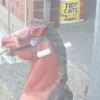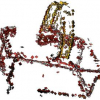110
click to vote
ICCV
2007
IEEE
16 years 2 months ago
2007
IEEE
Acquiring 3D models of intricate objects (like tree branches, bicycles and insects) is a hard problem due to severe self-occlusions, repeated thin structures and surface discontin...
110
Voted
ICCV
2007
IEEE
16 years 2 months ago
2007
IEEE
Monocular SLAM has the potential to turn inexpensive cameras into powerful pose sensors for applications such as robotics and augmented reality. However, current implementations l...
121
click to vote
ICCV
2007
IEEE
16 years 2 months ago
2007
IEEE
Many computer vision tasks may be expressed as the problem of learning a mapping between image space and a parameter space. For example, in human body pose estimation, recent rese...
111
click to vote
ICCV
2007
IEEE
16 years 2 months ago
2007
IEEE
In this paper we propose a general framework to solve the articulated shape matching problem, formulated as finding point-to-point correspondences between two shapes represented b...
109
Voted
ICCV
2007
IEEE
16 years 2 months ago
2007
IEEE
This paper proposes a feature-based method for recovering the relative positions of the viewpoints of a set of panoramic images for which no a priori order information is availabl...
103
click to vote
ICCV
2007
IEEE
16 years 2 months ago
2007
IEEE
We propose a simple probabilistic generative model for image segmentation. Like other probabilistic algorithms (such as EM on a Mixture of Gaussians) the proposed model is princip...
125
click to vote
ICCV
2007
IEEE
16 years 2 months ago
2007
IEEE
In this paper, we present a new method for segmenting closed contours and surfaces. Our work builds on a variant of the Fast Marching algorithm. First, an initial point on the des...
108
click to vote
ICCV
2007
IEEE
16 years 2 months ago
2007
IEEE
While great strides have been made in detecting and localizing specific objects in natural images, the bottom-up segmentation of unknown, generic objects remains a difficult chall...
ICCV
2007
IEEE
16 years 2 months ago
2007
IEEE
We present variable-aperture photography, a new method for analyzing sets of images captured with different aperture settings, with all other camera parameters fixed. We show that...
87
Voted
ICCV
2007
IEEE
16 years 2 months ago
2007
IEEE
Visually extracted 2D and 3D information have their own advantages and disadvantages that complement each other. Therefore, it is important to be able to switch between the differ...
